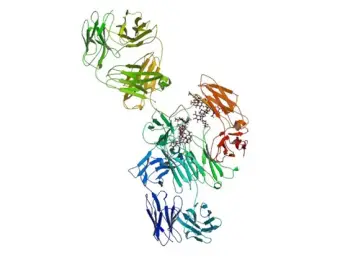Omadacycline API Manufacturers & Suppliers
Find, compare & contact
Filters
Custom request?
Type
Production region
Qualifications
Country of origin
Producer
Produced in:
Established in: 14
MOQ: -
Employees: 500+

quality

service

speciality
+ 0
All certificates
Producer
Produced in:
Established in: 2019
MOQ: 1 kg
Employees: 10+

Focused on pharmaceutical industry

Reasonable price for the customers

Full service from R&D stage to commercial stage
+ 0
All certificates
How does it work?
You can register for free as long as you are registering on behalf of a legal company related to the pharmaceutical industry
Search in the search bar the product that you’re looking for. We’ll show you an overview of all available suppliers. Use the filters to select the relevant suppliers only
Have you found interesting suppliers? Then it’s time to contact them. Use the send inquiry button and send them a message. You can send for each product, 3 inquiries per week
Suppliers get notified by Pharmaoffer that they’ve received a new inquiry. They will come back to you with their questions, certificates, and offer in the chat on Pharmaoffer. We will send you an email in case of any news
Does the supplier meet your quality and commercial requirements? Then you can place the order. Just follow the steps of our order module
Looking for Omadacycline API 389139-89-3?
- Description:
- Here you will find a list of producers, manufacturers and distributors of Omadacycline. You can filter on certificates such as GMP, FDA, CEP, Written Confirmation and more. Send inquiries for free and get in direct contact with the supplier of your choice.
- API | Excipient name:
- Omadacycline
- Synonyms:
- Amadacycline
- Cas Number:
- 389139-89-3
- Unique Ingredient Identifier:
- 090IP5RV8F
Omadacycline is a type of Tetracyclines
Tetracyclines are a widely used subcategory of pharmaceutical active pharmaceutical ingredients (APIs) that play a crucial role in the treatment of various bacterial infections. They belong to the class of antibiotics and are characterized by their tetracyclic chemical structure. Tetracyclines exhibit broad-spectrum activity against both Gram-positive and Gram-negative bacteria, making them highly effective in combating a wide range of infections.
These APIs work by inhibiting protein synthesis in bacteria, thereby preventing their growth and reproduction. Tetracyclines bind to the bacterial ribosome, specifically the 30S subunit, and disrupt the addition of amino acids to the growing peptide chain, ultimately leading to bacterial cell death.
Due to their broad antimicrobial spectrum and efficacy, tetracyclines are utilized in the treatment of various infections, including respiratory tract infections, urinary tract infections, skin and soft tissue infections, sexually transmitted diseases, and certain types of acne. Moreover, they have been used in the management of certain protozoal infections.
It is important to note that tetracyclines are subject to certain limitations and considerations. Their usage is contraindicated in pregnant women, children, and individuals with hepatic or renal impairments. Tetracyclines also exhibit photosensitivity, which may necessitate sun protection measures during treatment.
In summary, tetracyclines are a valuable subcategory of pharmaceutical APIs that offer broad-spectrum antimicrobial activity. Their effectiveness against a wide range of bacterial infections has made them indispensable in modern medicine, though their usage requires careful consideration of individual patient factors and potential side effects.
Omadacycline (Tetracyclines), classified under Antibacterials
Antibacterials, a category of pharmaceutical active pharmaceutical ingredients (APIs), play a crucial role in combating bacterial infections. These APIs are chemical compounds that target and inhibit the growth or kill bacteria, helping to eliminate harmful bacterial pathogens from the body.
Antibacterials are essential for the treatment of various bacterial infections, including respiratory tract infections, urinary tract infections, skin and soft tissue infections, and more. They are commonly prescribed by healthcare professionals to combat both mild and severe bacterial infections.
Within the category of antibacterials, there are different classes and subclasses of APIs, each with distinct mechanisms of action and target bacteria. Some commonly used antibacterials include penicillins, cephalosporins, tetracyclines, macrolides, and fluoroquinolones. These APIs work by interfering with various aspects of bacterial cellular processes, such as cell wall synthesis, protein synthesis, DNA replication, or enzyme activity.
The development and production of antibacterial APIs require stringent quality control measures to ensure their safety, efficacy, and purity. Pharmaceutical manufacturers must adhere to Good Manufacturing Practices (GMP) and follow rigorous testing protocols to guarantee the quality and consistency of these APIs.
As bacterial resistance to antibiotics continues to be a significant concern, ongoing research and development efforts aim to discover and develop new antibacterial APIs. The evolution of antibacterials plays a crucial role in combating emerging bacterial strains and ensuring effective treatment options for infectious diseases.
In summary, antibacterials are a vital category of pharmaceutical APIs used to treat bacterial infections. They are designed to inhibit or kill bacteria, and their development requires strict adherence to quality control standards. By continually advancing research in this field, scientists and pharmaceutical companies can contribute to the ongoing battle against bacterial infections.
Omadacycline manufacturers | traders | suppliers
We have 2 companies offering Omadacycline produced in 0 different countries.
Get in contact with the supplier of your choice:
- Sichuan Qingmu Pharmaceutical Co., from China, product country of origin China
- Apino Pharma Co., Ltd. from China, product country of origin China
Let the supplier know whether you are looking for a product with a specific monograph such as EP (Ph. Eur.), USP, JP, BP or another quality. Or, whether you are looking for hydrochloride (HCl), anhydricum, base, micronisatum or a specific purity.
You can use the filters to find high-quality suppliers. For example, you can select GMP, FDA or ISO certified suppliers. Visit our FAQ page or use the chat box in the corner to get more information about Pharmaoffer.











